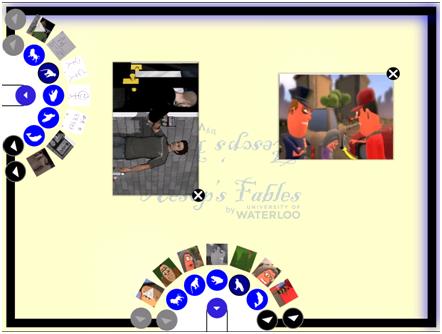Designing Visual Affordances into Digital Tabletop Menus for Use in Public Settings
Description
Ease of use with digital tabletops in public settings is contingent on how well the system invites and guides interaction. The same can be said for the interface design and individual graphical user interface elements of these systems. One such interface element is menus. Prior to a menu being used however, it must first be discovered within the interface. Existing research pertaining to digital tabletop menu design does not address this issue of discovering or opening a menu. This project investigates how the interface and interaction of digital tabletops can be designed to encourage menu discoverability in the context of public settings.
In particular, the project explores a proposed set of menu invocation designs varying on the invocation element (i.e. button- or border-based menu invocation) and use of animation. These designs were evaluated through an observational study at a local museum to observe users’ interactions in a realistic public setting. Findings from the study propose the use of discernible and recognizable interface elements, e.g. buttons, supported by the use of animation to attract and guide users as a discoverable menu invocation design. Additionally, the study found that when engaging with a public digital tabletop display, users transition through two specific interaction phases, exploration and discovery, before becoming competent with the system. Finally, insights from the study point to a set of design recommendations for improving menu discoverability, such as providing immediate feedback to exploratory interactions, using discernible interface elements, and using animation to guide user exploration and discover of system features.
Images
| Border-based menu invocation design – initial view | Button-based menu invocation design – initial view |
|---|---|
 |
 |
| Pop-up menu preview animation, border invocation condition | Open menus in the tested media browser application, border invocation condition |
 |
 |
| Children interacting with the digital tabletop during the observational study | |
 |
Project Partners
 |
 |
- Infusion Development (Toronto, ON)



